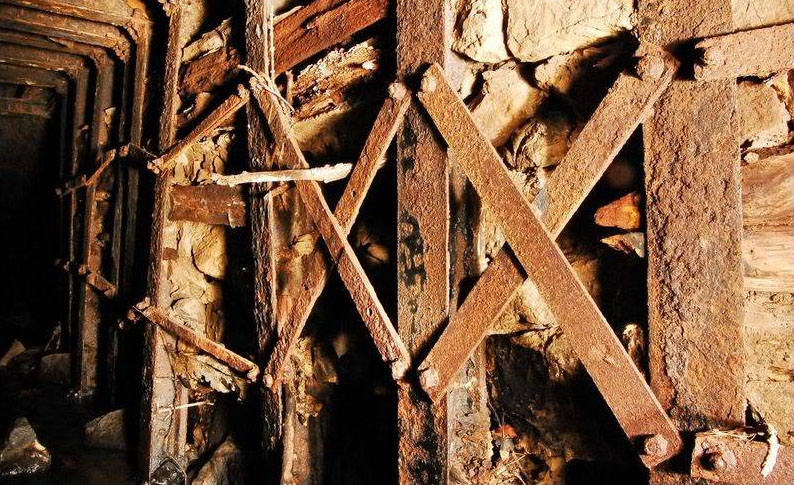Session 16B: The Sanguineous Drinker

This took them into a small area with four chambers similar to the antechambers in which they had found the black cords upstairs. In each of the chambers, they could see the smashed remnants of complex machinery.
“What are these things?” Elestra openly wondered.
As you’re going to see in the next campaign journal, the PCs are about to get their asses kicked by the black centurions – golems of pitch black metal with the devastating attribute of sublimating into caustic vapor when they’re destroyed.
The centurions did not, however, take the PCs completely by surprise. They’re an example of what I’m going to call fair peril: The PCs encountered clues suggesting that this danger existed before they encountered the danger itself.
The particular technique I used for this specific fair peril is repetition in dungeon design: As the PCs explore a given dungeon complex, the will encounter certain features over and over again. As they interact with these features, they will learn more about how they function, allowing them to be more successful in their future interactions with those features.
In this case, the PCs encountered a number of these four-chamber clusters.
Near one of the cables, lying on the floor, was a black, metallic hand. It looked as if it might have been broken off from some sort of life-sized statue. Ranthir picked it up and began studying it. He had just noticed that the joints of the hand were fully articulated when he carried it out into the hallway. The hand almost instantly sublimed into a cloud of caustic black vapor that burned his eyes and his skin.
In this one, for example, they encountered the caustic vapor trick, which might have warned them about what the full black centurions would do when they encountered them. (They didn’t actually connect the dots, but they could have. And after the fact they were able to look back and go, “Oh no! We should have known better!” Which can be just as satisfying, albeit in a different way.)
I find it generally more effective to repeat these patterns with variations. These repeated elements within your dungeon design form a puzzle of sorts. When it’s the exact same thing every time, it ends up being a really boring puzzle.
You can see this design philosophy strongly in my redesign of the Tomb of Horrors, although there the expectations are subverted with the repeated design elements sometimes creating a false expectation of similar function (even when other clues are warning the PCs that this is not the case).
Sandy Petersen’s Creepy Stuff Rule is another example of how fair peril can be designed into your scenarios.
The good news is that you really don’t need to overthink this: Fair peril elements will flow naturally out of designing things that are true to your game world. When these laboratories were still functioning aeons ago, for example, they were protected by the black centurions. It follows that (a) black centurion stations would be located at various places around the dungeon complex and (b) those stations would be in various states of disrepair.
The other great thing about fair peril is that it’s basically synonymous with suspense, anticipation, and tension: Suspecting what dangers might lie around the next corner is what will make your players dread turning that corner.
AMBUSH DANGERS
With that being said, please don’t mistake fair peril as being the one true way. Ambush dangers – the perils that appear without any warning whatsoever – also have their place, and the jump scares they provide can be very effective.
And, in fact, the centurions in this scenario could just as easily have been an ambush danger if the PCs had explored the dungeon in a different sequence. (It’s a very nonlinear complex.)
Of course, if they’d done that, you’ll note that the trap of the sublimating caustic hand would have become fair peril. See what I mean about how easy this stuff is if you design realistic, interconnected and consistent worlds?











